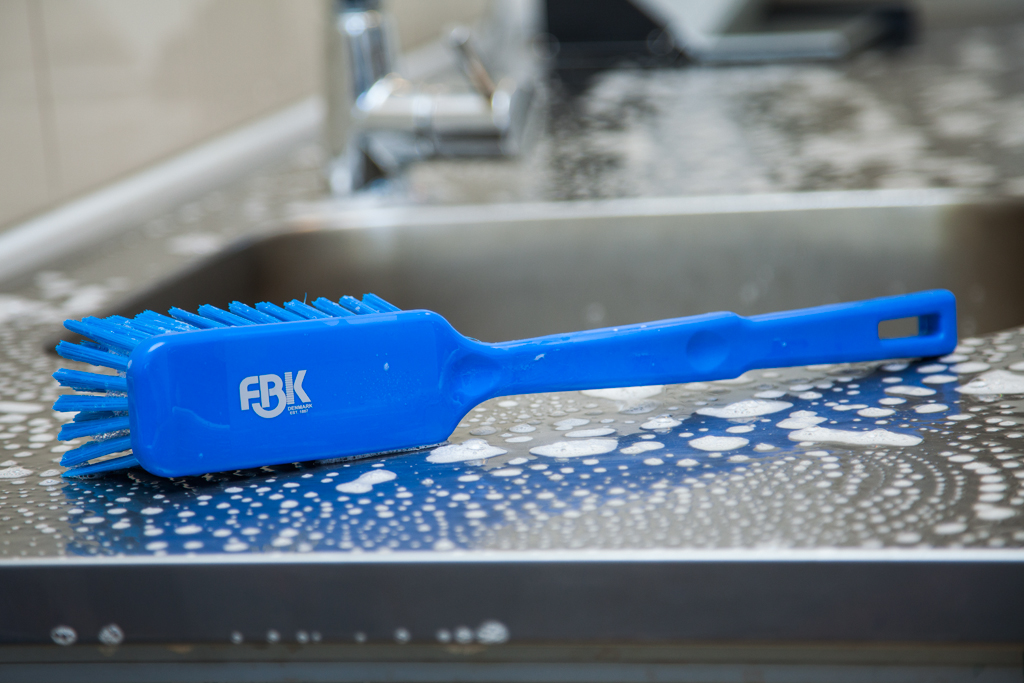We all know the saying, “a new broom sweeps clean.” Well, with the benefit of today’s modern expertise and experience, there’s a lot more to the most hygienic solution than just ‘new’. Added to that, “clean” isn’t what it used to be!
“As with sanitisation, there’s more to planning your brushware than meets the eye,” says Tarryn Onions, Business and Technical consultant. “Often brushware looks the part, but it’s far from suitable for the complicated and important task at hand. That’s why you need expert advice.”
Today’s operation owner has a responsibility, both ethical and legal, to ensure that the premises, equipment and processes of that organisation comply with every food safety related, health and safety and environmental regulation or standard, when it comes to the cleanliness. Visually spotless is no longer the minimum – microbiologically safe and audit-ready is the norm to strive for!
The most important part of a cleaning crew’s arsenal – alongside chemicals and cleaning agents, experience, know-how, and systems – is the variety of fit-for-purpose brushes, brooms and other necessary equipment used to keep a space in an optimum hygienic state.
For many people, that sounds pretty easy to work out. “I’ll just order what I need from any store.” Right? Wrong! Not all brushes are made equal, you see.
But with decades of professional cleaning and sanitation experience under our belt, Ecowize is perfectly positioned to guide you through the process of selecting your tools and then making them work for you and your environment. Our expertise enables us to ask the right questions:
Question 1: Is the material of the bristle or cleaning textile suited to the area and surface it needs to clean? This is to ensure that it does the correct job while not damaging any area or equipment cleaned.
Question 2: Is the material of the handle or handgrip suited to long-term hygienic use? For example, we always recommend plastic or aluminium. Your selected tools should also not have nooks or crannies for bacteria to hide in. The material of all parts of your equipment should not be pervious, corrosive or tend to become brittle.
Question 3: Is the ergonomic design of the equipment configured to support the user in maintaining best-practice cleaning methods?
Question 4: Is your set of brush-ware adequate enough for the area it has to clean within the amount of time and energy you can allocate?
Question 5: Have you worked out a sensible, site-specific colour-coded system for your equipment, allocating specific brushware to specific areas? Having such a system in place prevents cross-contamination, or the travel of harmful bacteria, pathogens or allergens from one space to another. It is an invaluable and must-have process for any cleaning operation!
Question 6: Do you have an easy-to-maintain and easy-to-follow system to clean your equipment between use?
It’s all about asking the right questions – and getting the right answers. At Ecowize, we can help you do both. Simply contact us and we’ll tailor-make a customised solution for your needs.
If you’re in the food industry, we’ll also come in and assist in training, creating systems and auditing your cleaning procedures according to the pre-requisite requirements stipulated in the Food Safety standards and regulations.
Now that we’ve unpacked the ins and outs of your cleaning equipment, we’ll break down the foundation of cleaning, known as Sinner’s Circle. Keep an eye open for our next blog post to learn more about the holy grail of deep cleaning!
Comments are closed.





